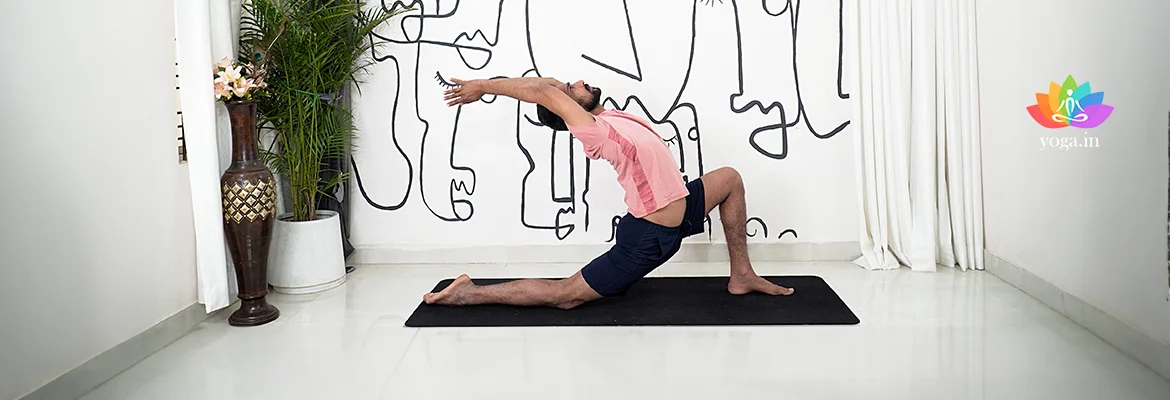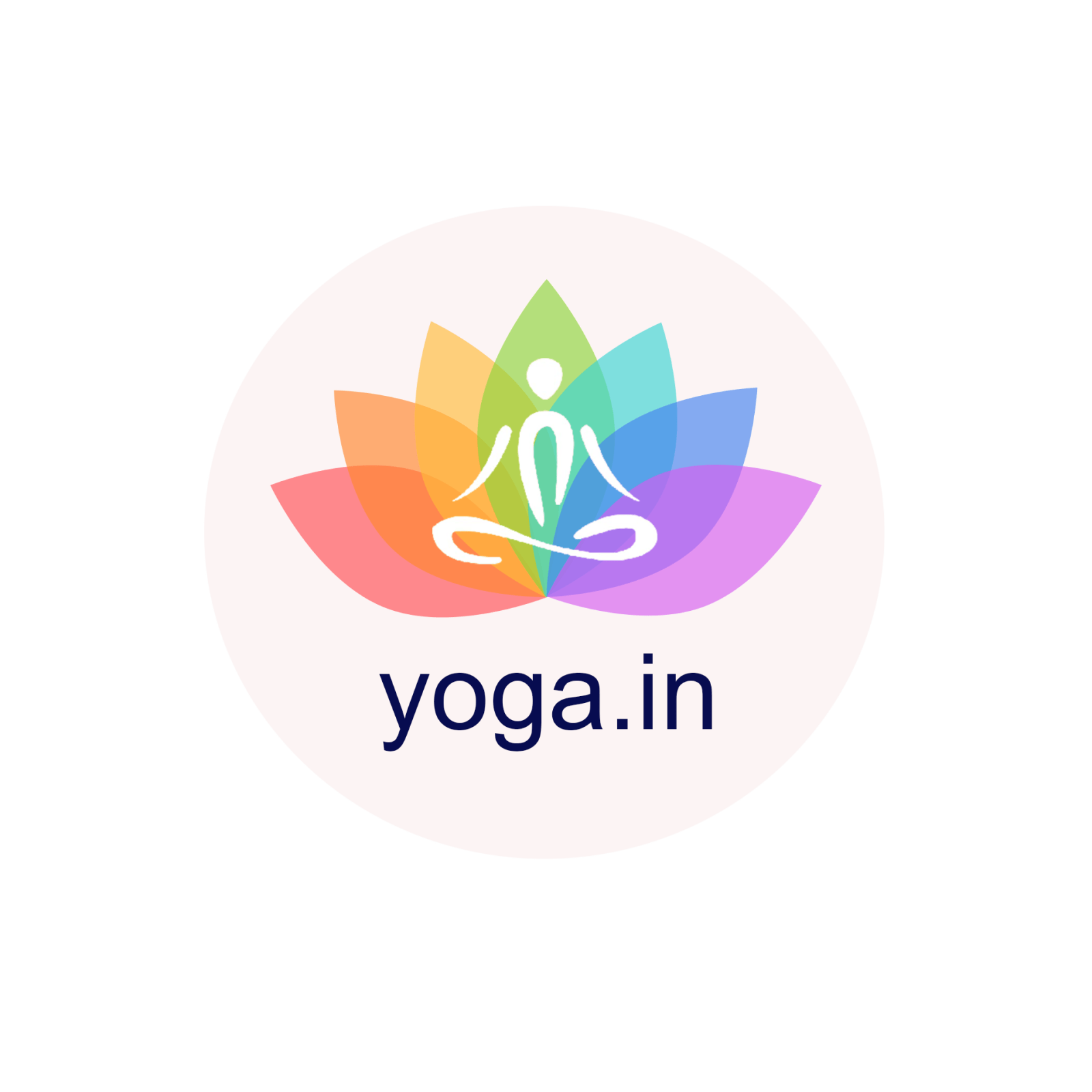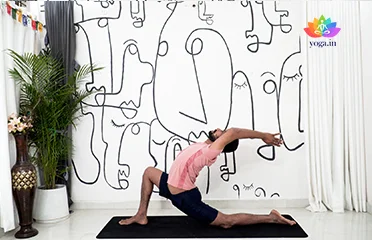Stand in Tadasana.
Introduction to the Asana
The Sanskrit name is derived from Anjane (आंजने) meaning Hanuman, the son of Anjani and asana (आसन) meaning posture or seat.
Step to get in the pose
-
-
Take a wide step separating your legs and place your hands on the hips.
-
Drop the left knee on the mat.
-
Your left ankles, calves and knees should be balanced on the floor.
-
Rotate your upper body towards your right with your toes outwards at 90 degrees.
-
Bring your hands onto your right knee.
-
Bend your right knee and lift the back heel off the floor.
-
Inhale and slowly raise your arms above your head, keeping the arms in line with your ears.
-
To deepen into the lunge, press firmly into your feet as you allow your hips to shift forward.
-
To support engagement and to avoid sinking into the joints, hug your inner thighs in towards one another to create adduction.
-
Inhale, bring the body to the center.
-
If comfortable, bend your upper spine into a backbend.
-
Inhale and balance this pose for 5-8 breaths.
-
To come out of the pose, exhale and lower your hands on the hips.
-
Curl the toes of the back foot and come up straightening both legs.
-
Now repeat the same to the other side.
-
After completing both sides, bring your legs together and relax in Tadasana.
Common mistakes and pitfalls
-
Overextending the knee joints.
-
Not keeping the back foot straight.
Benefits
-
Enhances lower body strength and flexibility.
-
Strengthens the muscles and joints.
-
Helps relieve sciatica and spinal issues.
-
Makes the gluteus muscles and the quadriceps stronger.
-
Improves the alignment and body posture, balance and stability.
-
Opens up your shoulders, lungs, and chest.
-
Improves breathing and blood circulation.
-
Helps lower your blood pressure and improve cardiac health and heart rate.
-
Tones the stomach, stimulates digestive functions and improves the metabolism.
-
Alleviates intellectual and developmental disabilities (IDDs) of individuals having reduced cognition and learning issues.
-
Alleviate chronic pelvic pain in women.
-
Cures reproductive ailments in men.
-
Balances the chakra.
-
Reenergises the body.
-
Uplifts the body, mind, and spirit.
Contraindication
-
Avoid in case of injury or surgery of the hips, knee, groin or abdomen.
-
Avoid in case of weak knees, ankles, shoulders, and hip joints.
-
Avoid in case of lower back problems.
-
Avoid if suffering from Osteoporosis or Sciatica.
-
Avoid doing this yoga if there is a lack of body-breath connection.
-
Avoid if suffering from high blood pressure.
-
Avoid if undergoing therapy or restorative treatment.
-
Avoid during pregnancy.
-
Postnatal and senior citizens should avoid this pose.




